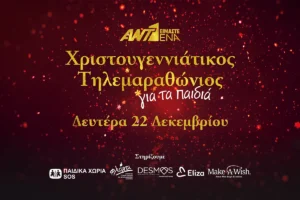What is the Cave of Darkness? What is the purest form of Truth? How do the esoteric allegories of the Matrix connect to Philosophy? How is Plato connected to the Matrix?
In the realm of philosophical inquiry, few stories have captured the imagination and provoked thought as profoundly as Plato’s Allegory of the Cave and the modern sci-fi classic, “The Matrix.” Plato’s esoteric allegories of the Matrix connect to Philosophy and these narratives, separated by over two millennia, delve into the fundamental questions of perception, reality, and the pursuit of truth.
Plato’s allegory, an integral part of his work “The Republic,” presents a metaphorical scenario exploring human ignorance and enlightenment. Similarly, “The Matrix,” a revolutionary film by the Wachowskis, envisions a future where humanity is trapped in a simulated reality, raising questions about the nature of existence and consciousness.
Follow me down this thread, through the darkness of the Cave, we can examine these two parables side-by-side and uncover deep philosophical insights in our ongoing quest for understanding the true nature of reality.
Plato (Πλάτων), born Aristocles (Ἀριστοκλῆς; c. 427 – 348 BC), was an ancient Greek philosopher of the Classical period who is considered a foundational thinker in Western philosophy and an innovator of the written dialogue and dialectic forms.
He raised problems for what became all the major areas of both theoretical philosophy and practical philosophy and was the founder of the Platonic Academy, a philosophical school in Athens where Plato taught the doctrines that would later become known as Platonism.
Plato’s most famous contribution is the theory of Forms (or Ideas), which has been interpreted as advancing a solution to what is now known as the problem of universals. He was decisively influenced by the pre-Socratic thinkers Pythagoras, Heraclitus, and Parmenides, although much of what is known about them is derived from Plato himself.
Plato is actually a nickname meaning “πλατύς/’broad”). Although it is a fact the philosopher called himself Platon in his maturity, the origin of this name remains mysterious. Platon was a fairly common name but the name does not occur in Plato’s known family line. According to the 3rd-century Greek historian Diogenes Laertius, Plato at birth was given the name Aristocles (meaning “the one of great glory/reputation”), after his grandfather.
The sources of Diogenes Laertius account for this by claiming his wrestling coach, Ariston of Argos, dubbed him “broad” on account of his chest and shoulders, or that Plato derived his name from his wrestling style. While recalling a moral lesson about frugal living Seneca mentions the meaning of Plato’s name: “His very name was given him because of his broad chest”.
He must have been considerably strong, which aligns with his teacher’s (Socrates) views on fitness; the latter has said: No man has the right to be an amateur in the matter of physical training. It is a shame for a man to grow old without seeing the beauty and strength of which his body is capable.
Along with his teacher Socrates, and Aristotle – his own student, Plato is a central figure in the history of philosophy. Plato’s entire body of work is believed to have survived intact for over 2,400 years—unlike that of nearly all of his contemporaries.
Although their popularity has fluctuated, they have consistently been read and studied through the ages. Medieval Christian monks and Muslim scholars alike copied and preserved much of these works, while the Hellenistic world and Byzantium were falling.
Through Neoplatonism, he also greatly influenced both Christian and Islamic philosophy. In modern times, Alfred North Whitehead famously said: “The safest general characterization of the European philosophical tradition is that it consists of a series of footnotes to Plato.”
In Plato’s dialogues, Socrates and his company of disputants had something to say on many subjects, including several aspects of metaphysics. These include religion and science, human nature, love, and sexuality. More than one dialogue contrasts perception and reality, nature and custom, and body and soul. Francis Cornford identified the “twin pillars of Platonism” as the theory of Forms, on the one hand, and, on the other hand, the doctrine of the immortality of the soul.
In the dialogues, Socrates regularly asks for the meaning of a general term (e. g. justice, truth, beauty), and criticizes those who instead give him particular examples, rather than the quality shared by all examples. “Platonism” and its theory of Forms (also known as the ‘theory of Ideas’) denies the reality of the material world, considering it only an image or copy of the real world.
According to this theory of Forms/Ideas, there are these two kinds of things: the apparent world of material objects grasped by the senses, which constantly changes, and an unchanging and unseen world of Forms, grasped by reason – Logos (Λόγος – λογική). Plato’s Forms represent types of things, as well as properties, patterns, and relations, which are referred to as objects.
Just as individual tables, chairs, and cars refer to objects in this world, ‘tableness’, ‘chairness’, and ‘carness’, as well as e.g. justice, truth, and beauty refer to objects in another world. One of Plato’s most cited examples for the Forms were the truths of geometry, such as the Pythagorean theorem.
Plato also discusses several aspects of epistemology. In several dialogues, Socrates inverts the common man’s intuition about what is knowable and what is real. Reality is unavailable to those who use their senses. Socrates says that he who sees with his eyes is blind. While most people take the objects of their senses to be real if anything is, Socrates is contemptuous of people who think that something has to be graspable in the hands to be real. In the Theaetetus, he says such people are eu amousoi (εὖ ἄμουσοι), an expression that means literally, “happily without the muses-enlightenment”. In other words, such people are willingly ignorant, living without divine inspiration and access to higher insights about reality. Many have interpreted Plato as stating – even having been the first to write – that knowledge is justified true belief, an influential view that informed future developments in epistemology.
Plato’s Allegory of the Cave and the Matrix are two of the most compelling philosophical stories that question our understanding of reality, and its very existence. Despite being centuries apart, they share striking similarities in their exploration of perception, reality, and enlightenment. Plato’s allegory, from “The Republic,” describes people that have spent their lives chained in a cave facing a blank wall. They watch shadows projected onto the wall by objects passing in front of a fire behind them, and they give names to these shadows.
The shadows represent the prisoners’ reality but not accurate representations of the real world. The shadows represent the fragment of reality that we can normally perceive through our senses, while the objects under the sun represent the true forms of objects that we can only perceive through reason. Three higher levels exist: natural science; deductive mathematics, geometry, and logic; and the theory of forms.
One prisoner escapes the cave and, after an initial struggle with the blinding light, sees the world outside. He realizes the shadows were mere illusions and gains true knowledge. He returns to the cave to free the others, but they reject and resist the truth, preferring the familiar shadows.
Socrates explains how the philosopher is like a prisoner who is freed from the cave and comes to understand that the shadows on the wall are actually not the direct source of the images seen. A philosopher aims to understand and perceive the higher levels of reality. However, the other inmates of the cave do not even desire to leave their prison, for they know no better life.
“The Matrix,” a sci-fi film by the Wachowskis, tells of a dystopian future where humans live in a simulated reality created by intelligent machines. The protagonist, Neo, is freed from this simulated world and discovers the grim truth of human enslavement and the real world outside the simulation. In other words, the Matrix is a simulated reality that intelligent machines have created to distract humans while using their bodies as an energy source.
Throughout the Trilogy of the films we encounter humans that are not only accustomed to the illusions of the Matrix but refuse to acknowledge reality; we even seen one of the “freed” humans conspiring with the machines against Humans with the sole compensation of being returned into the Matrix – but in an upgraded, more pleasurable avatar.
Both stories revolve around the theme of illusion versus reality. In Plato’s cave, the shadows symbolize the limited perception of those who haven’t experienced true knowledge. In “The Matrix,” the simulated reality represents the artificial world that prevents humans from seeing the truth.
The journey from ignorance to knowledge is central in both tales. The cave escapee’s journey parallels Neo’s awakening. Both characters face initial discomfort and denial when confronted with the true nature of their realities but eventually embrace the truth.
Both stories highlight the resistance to enlightenment. The cave prisoners mock and reject the escaped prisoner’s revelations, much like how Neo initially struggles with and others resist the truth about the Matrix. This underscores the difficulty of breaking free from long-held beliefs.
Plato’s cave is a metaphor for human ignorance and the philosopher’s role in enlightening society. “The Matrix” expands on this by questioning the nature of reality and suggesting that our perceptions could be manipulated, pushing the boundaries of epistemology and metaphysics.
“The Matrix” adds a technological- cyberpunk dimension to Plato’s philosophical ideas, suggesting that advanced technology could create convincing false realities. This modern twist resonates with contemporary concerns about virtual reality and artificial intelligence. Plato’s Allegory of the Cave and “The Matrix” both challenge us to question our perceptions and consider the possibility of a deeper reality. They remind us that enlightenment often comes with struggle and resistance but ultimately leads to a more profound understanding of existence.
But there is Hope. In Plato’s allegory, it is supposed that the prisoners are released. A freed prisoner would initially break free to look around and see the fire. The light would hurt his eyes and make it difficult for him to see the objects casting the shadows. If he were told that what he is seeing is real instead of the other version of reality he sees on the wall, he would not believe it. In his pain, the freed prisoner would turn away and run back to what he is accustomed to (that is, the shadows of the carried objects). The light “… would hurt his eyes, and he would escape by turning away to the things which he was able to look at, and these he would believe to be clearer than what was being shown to him.”
Plato continues: “Suppose… that someone should drag him… by force, up the rough ascent, the steep way up, and never stop until he could drag him out into the light of the sun.” The prisoner would be angry and in pain, and this would only worsen when the radiant light of the sun overwhelms his eyes and blinds him. It is like the crude, rough awakening of the humans in the Matrix. “Slowly, his eyes adjust to the light of the sun. First, he can see only shadows. Gradually he can see the reflections of people and things in water and then later see the people and things themselves. Eventually, he is able to look at the stars and moon at night until finally he can look upon the sun itself”. Only after he can look straight at the sun “is he able to reason about it” and what it is, in reality. And thus, he is reborn.
In a world where our perceptions can be shaped by countless external influences, the lessons from Plato’s Cave are more pertinent than ever. They compel us to continuously seek the truth, question the nature of our realities, and remain vigilant against the comforts of ignorance. As we navigate an increasingly complex digital age, these philosophical insights encourage us to pursue enlightenment and embrace the transformative power of knowledge. Keep questioning, keep seeking the Awakening, search for the Light, and Ascend, through the darkness of our veiled world












